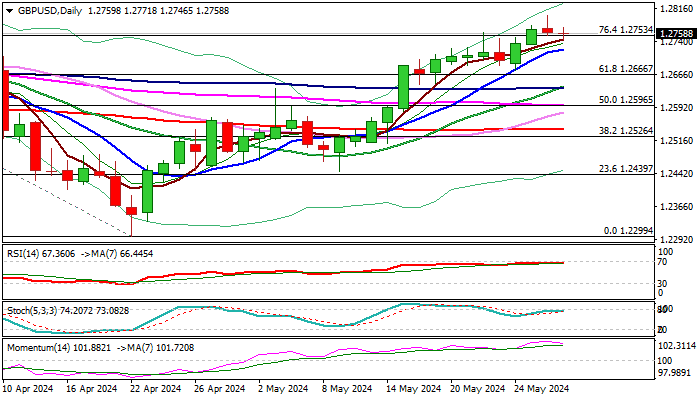The GBPUSD pair may experience a price adjustment before making a decisive breakthrough of the 1.2800 zone
The British pound strengthened in early Wednesday trading after reaching a nine-week high of 1.2800 on Tuesday. However, it subsequently retreated due to an unexpectedly strong rise in US consumer confidence for May, which temporarily boosted the dollar.
The breached Fibonacci barrier at 1.2753 (76.4% retracement of the 1.2893/1.2299 move) has reverted to solid support, bolstered by the 5-day moving average (DMA), which has so far contained dips. Nevertheless, there remains a risk of a deeper pullback as the 14-day momentum indicator declines from extreme highs and the RSI hovers just below the overbought threshold.
This situation may serve as an initial warning sign, though the moving averages (MAs) maintain a bullish configuration, continuing to trend upwards. Therefore, a cautious approach with a bullish bias is advised as long as the price remains above 1.2753.
Sterling also benefits from diminished expectations of a Bank of England rate cut in June, though some price correction is possible due to stretched daily technical studies.
The rising 10-day moving average offers the next support at 1.2722, followed by the higher low from May 24 at 1.2675, and the broken 61.8% Fibonacci retracement level at 1.2666, which should ideally contain any downside and preserve the broader bullish trend.
The release of US inflation data (PCE) on Friday will be closely monitored for new signals.
Resistance levels: 1.2803; 1.2823; 1.2893; 1.2995
Support levels: 1.2745; 1.2722; 1.2666; 1.2635


